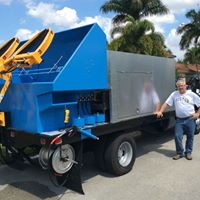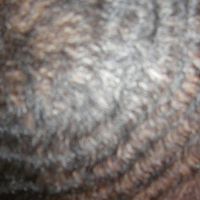Bryan R Paige
age ~61
from Jonesville, MI
- Also known as:
-
- Bryan Ralph Paige
- Brian R Paige
- Bryan K Page
- Brian R Smith
- Phone and address:
-
4491 Sterling Rd, Jonesville, MI 49250
517 849-2202
Bryan Paige Phones & Addresses
- 4491 Sterling Rd, Jonesville, MI 49250 • 517 849-2202
- Horton, MI
- Litchfield, MI
- South Lake Tahoe, CA
- Hillsdale, MI
Work
-
Position:Craftsman/Blue Collar
Education
-
Degree:High school graduate or higher
Us Patents
-
Capo
view source -
US Patent:6528711, Mar 4, 2003
-
Filed:Oct 5, 2001
-
Appl. No.:09/972338
-
Inventors:Bryan R. Paige - Jonesville MI 49250
-
International Classification:G10D 300
-
US Classification:84318, 84320
-
Abstract:An improved capo for use with various stringed instruments, such as for example a guitar, for fastening over the fingerboard or fret board to shorten the strings uniformly and facilitate a change of key. The capo includes a pair of normally closed spring biased jaw members and integral lever members operative to open the jaw members for movement along the length of fret board for selectively retaining all of the strings in abutting relation to the fret board. The improved capo is formed of spring stock to facilitate the attachment and positioning of the capo along the fret board.
-
Quick-Fix Capo Having Dual Adjustability Modes For Use With A Stringed Musical Instrument, And Method Of Using Same
view source -
US Patent:7973227, Jul 5, 2011
-
Filed:Apr 2, 2010
-
Appl. No.:12/753260
-
Inventors:Bryan Paige - Jonesville MI, US
-
International Classification:G10D 3/00
-
US Classification:84318
-
Abstract:A capo is structured and configured to permit rapid installation and tightening thereof on a stringed instrument. The capo includes a yoke with a central support member, a string-contacting clamping bar which is pivotally attached to the yoke, and a spring-loaded release member which fits into a first hollow bore in the central support member of the yoke. The capo also includes a substantially Y-shaped saddle member having a stem which slidably fits through a second hollow bore of the central support member, and an adjustment member for positioning the saddle member in the yoke. The engagement/release member is releasably held in position against the adjustment member by spring pressure. Rapid positioning of the saddle member is enabled by both coarse and fine adjustment of the adjustment member, made possible by buttressed threads present both inside of the engagement/release member and outside of a threaded shaft of the adjustment member.
-
Capo
view source -
US Patent:50818945, Jan 21, 1992
-
Filed:Jun 18, 1990
-
Appl. No.:7/540287
-
Inventors:Bryan R. Paige - Hillsdale MI
-
International Classification:G10D 300
-
US Classification:84318
-
Abstract:A capo composed of a semi-circular yoke, a bar pivotally connected at a first end to a first fork of the yoke and releasably interlocked at the second end to a second fork of the yoke via intermeshing of opposing slots oriented at ninety degrees to each other, a clasp mechanism located on the second fork for releasably locking onto the second end of the bar, a screw operated foot connected with the yoke, and dual guide bars connected at either side of the foot which movably engage slots located in the yoke. The capo provides for a simultaneous compressive force being applied to each of the strings of the instrument fretboard because the bar is connected with respect to the yoke and the foot at an angle so that it will engage the strings uniformly and simultaneously as the screw is tightened.
-
Capo For Use With A Stringed Musical Instrument, And Method Of Using Same
view source -
US Patent:20220246116, Aug 4, 2022
-
Filed:Jan 27, 2022
-
Appl. No.:17/585784
-
Inventors:Bryan PAIGE - JONESVILLE MI, US
-
International Classification:G10D 3/053
-
Abstract:A capo for a musical instrument with a neck and a plurality of parallel strings disposed above the neck. The capo includes a U-shaped yoke having first and second branches, and a clamping bar assembly pivotally attached to one of the yoke branches. The clamping bar assembly includes a main bar body and a plurality of separate string clamp members, which are operatively attached to the main bar body and formed of a substantially rigid plastic material. The clamping bar assembly also includes one or more flexibly resilient cushion members provided between the string clamp members and the main bar body. The main bar body may have sockets formed therein which receive individual cushion members and portions of the string clamp members. Alternatively, the string clamp members may share a single elongated cushion member, and may have passages formed therethrough allowing for slidable mounting on a solid main bar body.
-
Capo For Use With A Stringed Musical Instrument, And Method Of Using Same
view source -
US Patent:20210005171, Jan 7, 2021
-
Filed:Sep 16, 2020
-
Appl. No.:17/022242
-
Inventors:Bryan PAIGE - JONESVILLE MI, US
-
International Classification:G10D 3/053
-
Abstract:A capo for a musical instrument includes a yoke with a center section and two opposed branches. A clamping bar, pivotally connected to one yoke branch, includes an engaging boss which fits into a machined notch of a second yoke branch, to releasably lock the clamping bar between the branches of the yoke. A resilient, string-contacting member is located on the main body of the clamping bar. The yoke's center section has a central bore therein with a non-circular cross section which may be X-shaped, and also has a hollow passage extending in a direction which is perpendicular to an axis of the central bore. A saddle member has a central stem extending through, and configured to slidably fit into the yoke's central bore, and a seat is attached to the stem. An adjustment member is provided for adjusting a position of the saddle member on the yoke.
-
Capo For Use With A Stringed Musical Instrument, And Method Of Using Same
view source -
US Patent:20200066238, Feb 27, 2020
-
Filed:Aug 21, 2019
-
Appl. No.:16/546701
-
Inventors:Bryan PAIGE - JONESVILLE MI, US
-
International Classification:G10D 3/04
-
Abstract:A capo for a musical instrument includes a yoke having two opposed branches. A clamping bar, connected to one yoke branch, includes an engaging boss which fits into a machined notch of a second yoke branch, to releasably lock the clamping bar therein. The clamping bar pivots around a retaining shaft, and is also slidably movable by a length of a slot formed therein. A saddle member has a central stem, a seat attached to the stem, and an adjustment member for tightening the saddle member on the yoke. A resilient, tubular biasing member surrounds a main body of the clamping bar. Pressing a free end of the clamping bar compresses the biasing member, and slides the engaging portion of the clamping bar out of the machined notch of the yoke, to allow pivotal movement of the clamping bar and removal of the capo from the musical instrument.
Resumes

Bryan Paige
view sourceLocation:
204 Olds St, Jonesville, MI 49250
Industry:
Music
Work:
Paige Musical Products
President
President

Bryan Paige
view source
Bryan Paige
view source
Bryan Paige
view source
Bryan Paige
view source
Bryan Paige
view source
Paige Bryan
view source
Bryan Paige
view source
Bryan Paige
view source
Bryan Paige
view source
Bryan Paige
view source
Bryan Paige
view sourceGoogleplus

Bryan Paige

Bryan Paige

Bryan Paige

Bryan Paige
Myspace

Bryan Paige (Bryan) Mysp...
view sourceBryan Paige (Bryan)'s profile on Myspace, the leading social entertainment destination powered by the passion of our fans.
Youtube
Classmates

Bryan Paige
view sourceSchools:
Bingham Junior High School Kansas City MO 1990-1994
Community:
Kecia Jones, Teisha Hillmon, Tamika Johnson, Jovona Binns, Tiffany Lue

Bingham Junior High Schoo...
view sourceGraduates:
Bryan Paige (1990-1994),
Almeta Hoskins (1995-1999),
Joe Speer (1974-1978),
Rick Tucker (1972-1974),
Sheila Bradley (1978-1982),
Jill Harless (1973-1974)
Almeta Hoskins (1995-1999),
Joe Speer (1974-1978),
Rick Tucker (1972-1974),
Sheila Bradley (1978-1982),
Jill Harless (1973-1974)

Paige Bryan, Woodward Hig...
view source
Paige Bryan, Bluefield Hi...
view source
Gervais Union High School...
view sourceGraduates:
Brian Paige (1984-1988),
Dana Manning (1977-1981),
Trista Ross (1990-1994),
Henry Howe (1947-1951),
Dennis Weirich (1967-1971)
Dana Manning (1977-1981),
Trista Ross (1990-1994),
Henry Howe (1947-1951),
Dennis Weirich (1967-1971)
Get Report for Bryan R Paige from Jonesville, MI, age ~61









